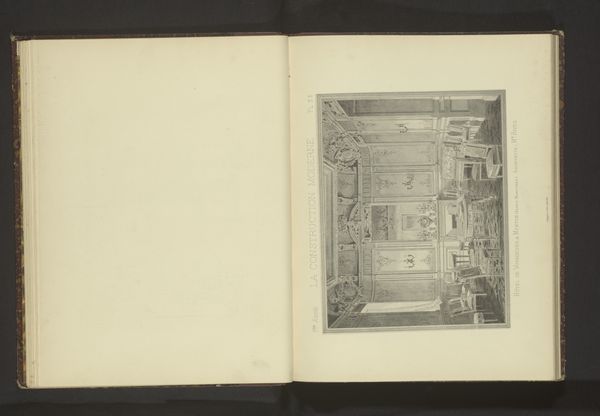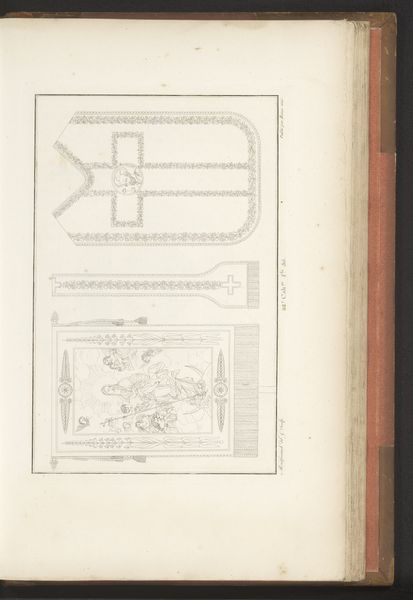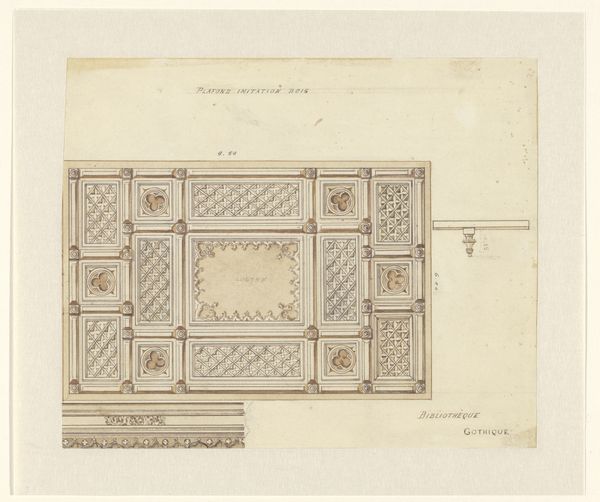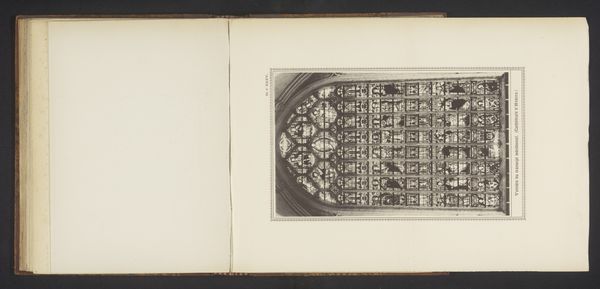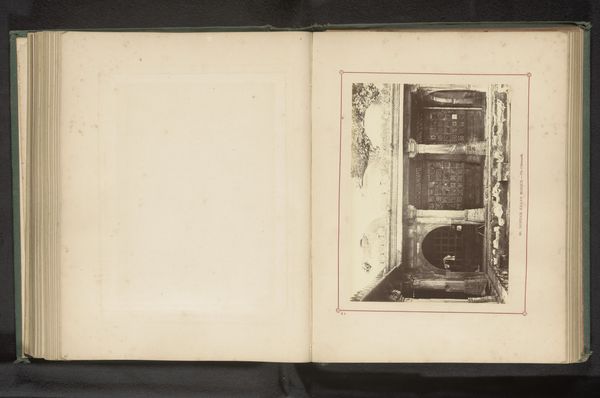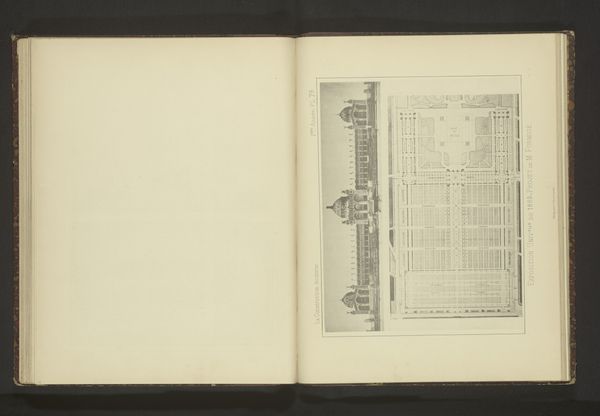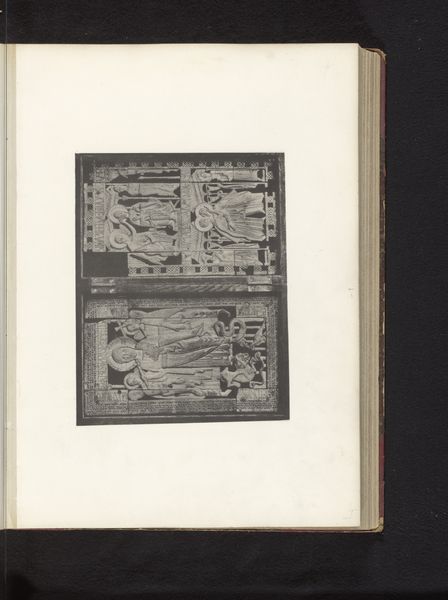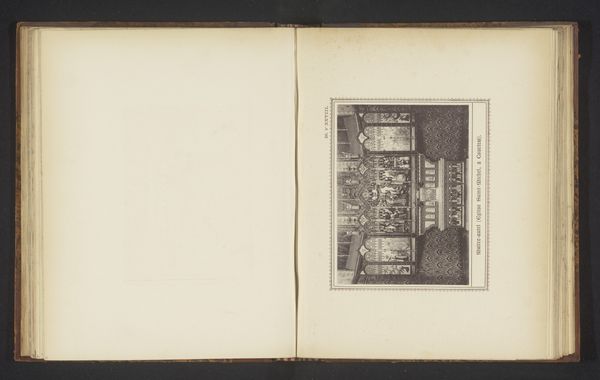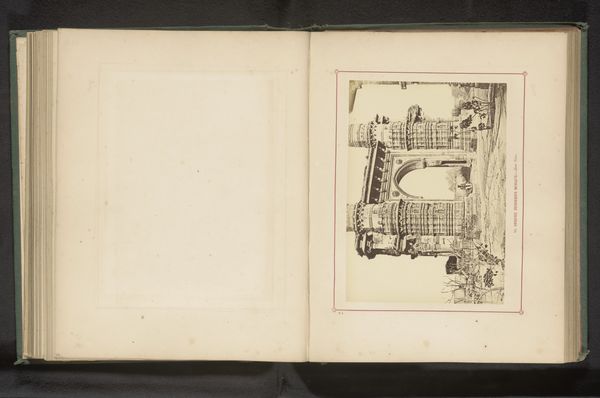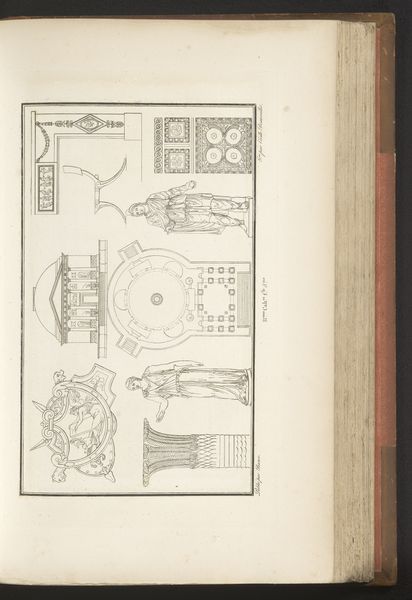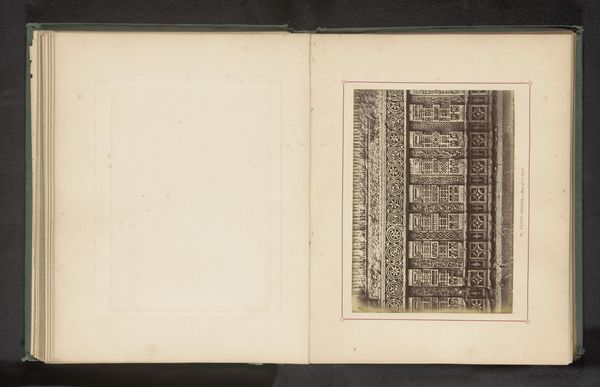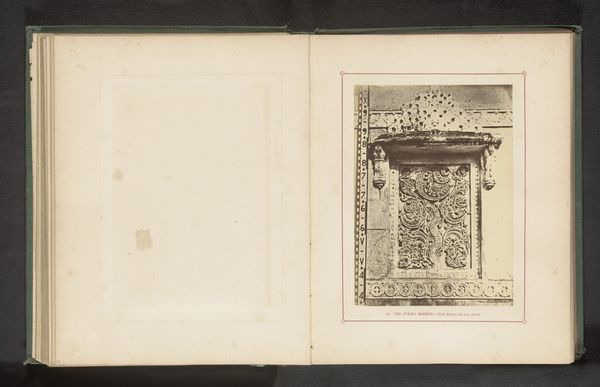
drawing, print, paper
#
drawing
#
aged paper
#
toned paper
#
homemade paper
#
pale palette
#
medieval
# print
#
paper texture
#
paper
#
hand-drawn typeface
#
geometric
#
folded paper
#
thick font
#
line
#
golden font
#
historical font
Dimensions: height 99 mm, width 165 mm
Copyright: Rijks Museum: Open Domain
Curator: The book binding for this liturgical text, made before 1896, uses print and drawing on paper, it appears. What strikes you most about it? Editor: It has such an archaic feel. I'm fascinated by the geometric print on the right page with its precise lines. How should we interpret this work, thinking about its time? Curator: The printing process here is central. Consider the labor involved in creating and reproducing this design, think about access to materials such as inks and suitable papers, especially to make it identical across an entire edition. It would require skillful artisans. Where did they learn these skills? And for whom were these books intended? Editor: So, instead of focusing on its aesthetic beauty, you want to consider its means of production. What can you tell me about print and its social status? Curator: Yes, examining printing here helps us break down assumed hierarchies between art and craft, doesn’t it? This binding wasn’t just decoration, but a product of specialized labor. Think about its consumption: Who was wealthy or privileged enough to own a bound liturgical book like this? It speaks volumes about social stratification at the time. Editor: I see what you mean. So the real focus isn't necessarily the imagery but more the economic and labor structure it implies? The idea that we are really meant to investigate those who made it and its consumers… Curator: Exactly! Looking at materials and production invites critical questions. Consider: where might these printed items have been sold or distributed, and who profited from their sale? Thinking about the life cycle of material objects reveals layers of meaning often missed in purely aesthetic readings. Editor: I hadn’t thought about bookbinding in that way before, as a nexus of artistic, artisanal, and commercial activities. Thank you! Curator: My pleasure. Analyzing art in the context of materials and labour reveals connections far beyond the image itself.
Comments
No comments
Be the first to comment and join the conversation on the ultimate creative platform.
